PIM stands for "passive intermodulation", which represents the intermodulation products produced when two or more signals are transmitted through a passive device with nonlinear characteristics. The interaction of the mechanical joints generally causes a non-linear effect, which is especially evident at the junction of two different metals. Examples include loose cable connections, dirty connectors, poorly performing duplexers, or aging antennas.
Passive intermodulation is a major problem in the cellular communications industry and is very difficult to resolve. In cellular communication systems, PIM can cause interference, reduce receiver sensitivity, and even completely block communication. This interference can affect the cell that produces it and other receivers in the vicinity.
For example, in LTE Band 2, the downlink range is 1930 MHz to 1990 MHz and the uplink range is 1850 MHz to 1910 MHz. If two transmit carriers at 1940 MHz and 1980 MHz transmit signals from a base station system with PIM, the intermodulation produces a component at 1900 MHz that falls into the receive band, which affects the receiver. In addition, intermodulation at 2020 MHz may affect other systems.
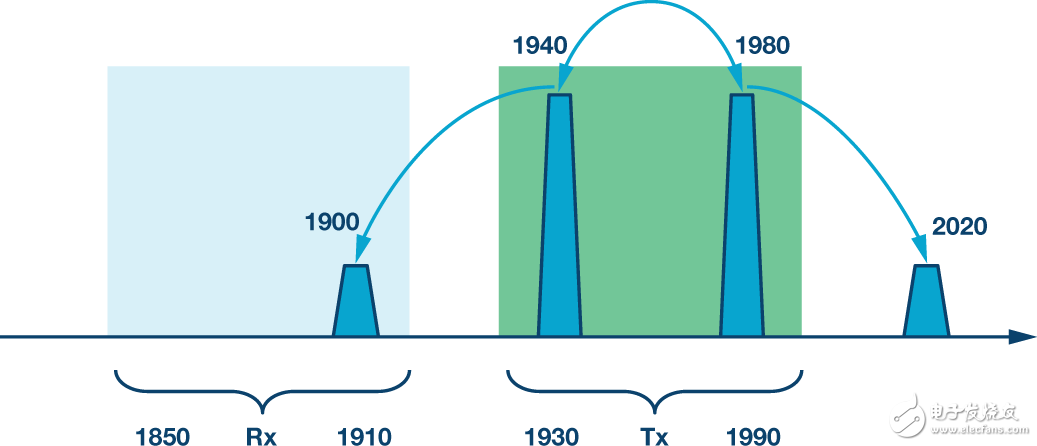 Figure 1. Passive intermodulation, falling to the receiver band
Figure 1. Passive intermodulation, falling to the receiver band As spectrum becomes more crowded and antenna sharing schemes become more prevalent, the likelihood of intermodulation of different carriers producing PIM is also increasing. Traditional methods of avoiding PIM using frequency planning are becoming less and less feasible. In addition to the above challenges, the adoption of new digital modulation schemes such as CDMA/OFDM means that the peak power of the communication system is also increasing, making the PIM problem "worry."
PIM is a serious problem for service providers and equipment vendors. Detecting and solving this problem as much as possible can improve system reliability and reduce operating costs. This article attempts to review the source and cause of PIM, as well as the techniques to be tested and resolved.
01 PIM classificationPreliminary investigations show that PIM has three different types, each with different characteristics and requiring different solutions. We choose to classify as follows: design introduction of PIM, assembly of PIM and rust PIM.
> > > >Design introduces PIM
We know that some passive devices generate passive intermodulation along with their transmission lines. Therefore, when designing a system, the development team should select passive components with a minimum or acceptable level of PIM, based on specifications given by the device manufacturer. Circulators, duplexers, and switches are particularly susceptible to PIM effects. Designers can choose a lower cost, smaller size, or lower performance device if they can accept higher levels of passive intermodulation.
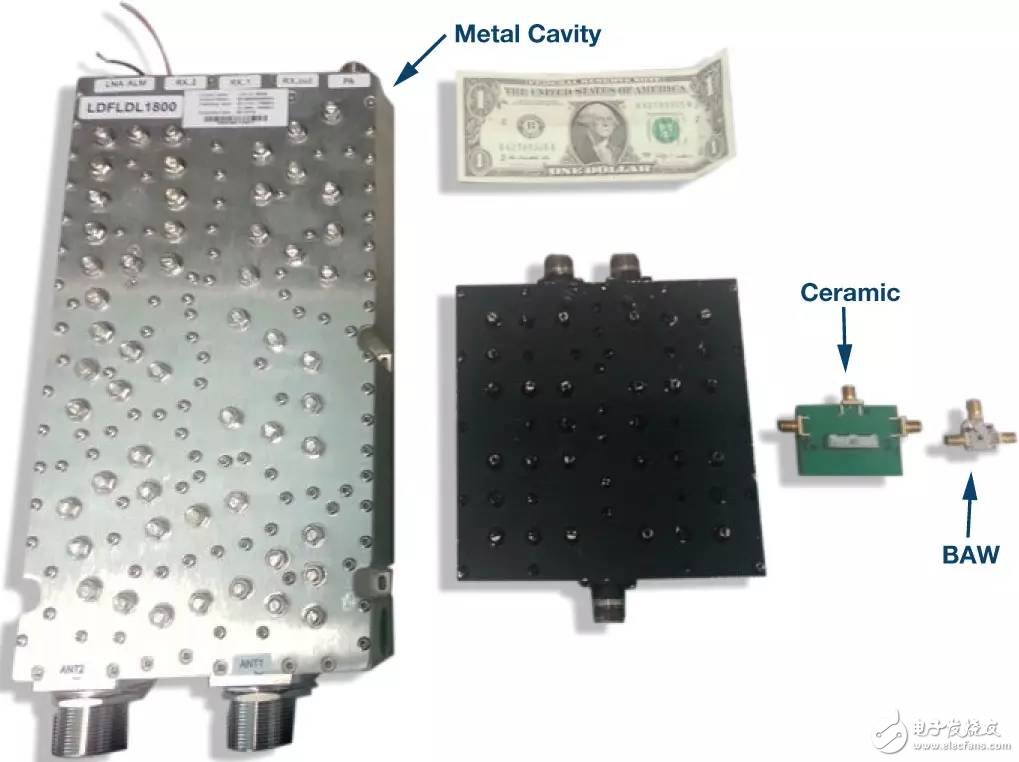 Figure 2. Device design trade-offs: size, power, rejection, and PIM performance
Figure 2. Device design trade-offs: size, power, rejection, and PIM performance If the designer really chooses a device with lower performance, the corresponding higher level intermodulation may fall back into the receiver band, causing the receiver to desensitize. It must be noted that in this case, poor spectral emissions or loss of power efficiency may not be as interesting as PIM causes receiver desensitization. This issue is especially important in small cellular radio designs. ADI is currently developing a technology that can detect, simulate, and cancel (cancel) static passive components such as duplexers from received signals (see Figure 3).
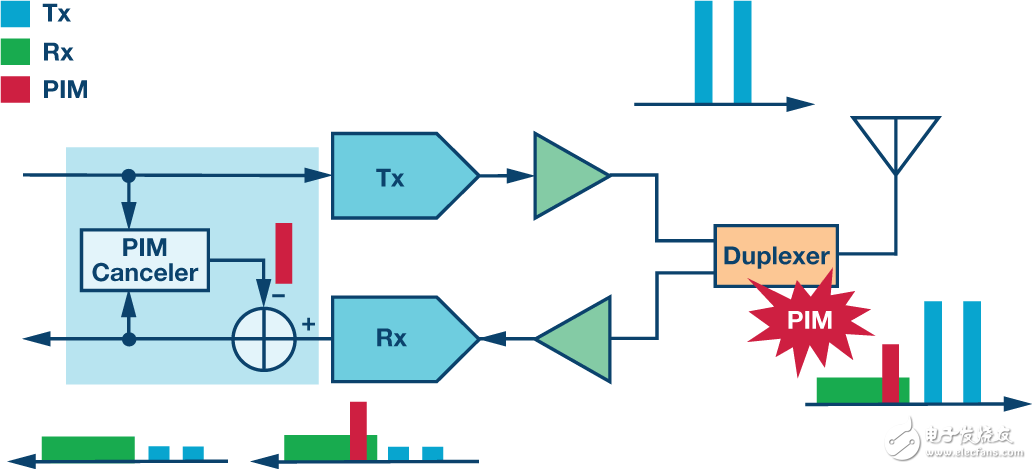 Figure 3. PIM generation and PIM cancellation algorithm
Figure 3. PIM generation and PIM cancellation algorithm The algorithm works because it knows the carrier information and can use receiver correlation to determine the intermodulation artifacts and then remove them from the received signal.
The limitations of the algorithm begin to emerge when correlations can no longer be used to determine intermodulation artifacts. Figure 4 shows an example. In this example, two different transmitters share an antenna. If the baseband processing of each path is assumed to be independent of each other, then the algorithm is less likely to know the information, so the correlation and cancellation processing that it can perform at the receiver is limited.
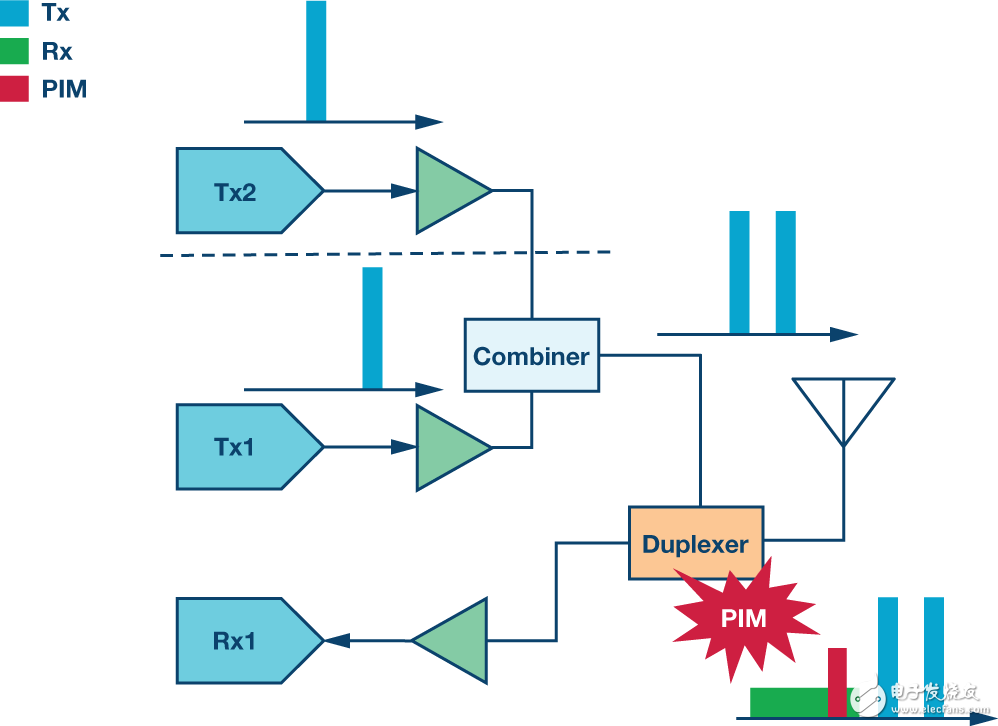 Figure 4. Multiple sources share an antenna
Figure 4. Multiple sources share an antenna Coupled with the complexity of the PIM challenge – site access and cost present challenges for service providers, we are beginning to find more and more examples of different transmitters sharing a single wideband antenna. Its architecture can be a mix of various frequency bands and formats: TDD + FDD; TDD: F + A + D, FDD: B3, and so on.
Figure 5 shows an overview of this configuration. In this example, the client is trying to implement a complex but realistic configuration. One branch is TDD dual frequency, and the other branch is FDD single frequency, using a duplexer. The signals merge and share a single antenna. The passive intermodulation between the Tx1 and Tx2 signals occurs in the path from the combiner, into the transmission line of the antenna, and in the antenna itself. The resulting intermodulation artifacts fall back to the FDD receiver band Rx2.
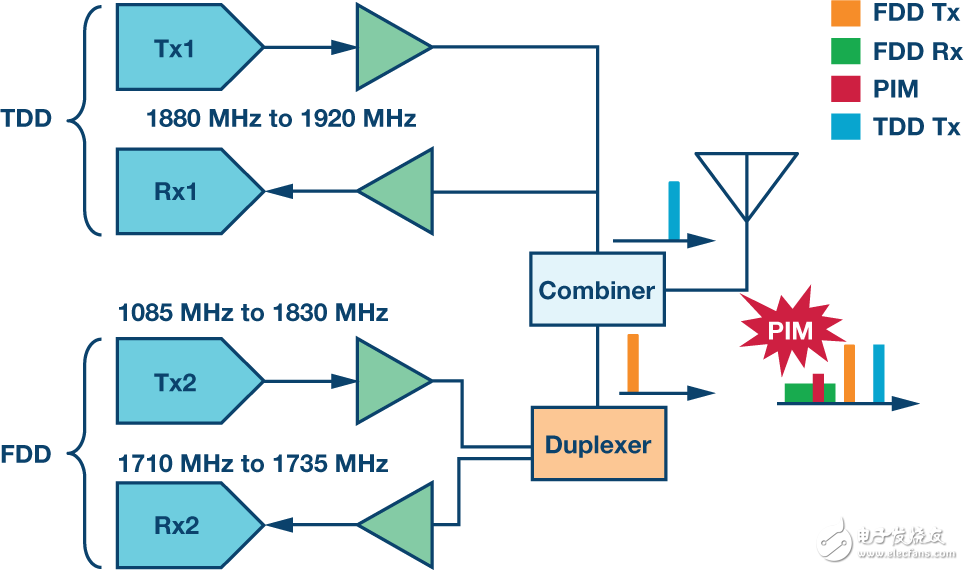 Figure 5. FDD/TDD single antenna implementation
Figure 5. FDD/TDD single antenna implementation Figure 6 shows the actual analysis of a dual-frequency system. Note that in this example, we need to consider passive modulation artifacts above the third order. In this case, focus on crossover artifacts that fall from one band (internal) back to another.
 Figure 6. Multi-frequency PIM problem > > > >
Figure 6. Multi-frequency PIM problem > > > > Assembling PIM
Although the system works satisfactorily after installation, over time, its performance often degrades due to poor weather or initial installation quality. When this happens, passive components (connectors, cables, cable assemblies, waveguide components, components, etc.) in the signal path usually begin to exhibit nonlinear behavior. In fact, some of the main PIM phenomena are caused by connectors, connections, and even the feeders of the antenna itself. The resulting effects may be similar to the introduction of PIM in the design discussed above, so the same PIM measurement theory can be used, which is specifically used to find the presence of passive intermodulation products.
Typical factors that cause assembly of PIM are:
Connector adapter interface (usually N or DIN7/16)
Cable accessories (mechanical stability of cable/connector joints)
Material (brass and copper are recommended, ferromagnetic materials have non-linear properties)
Cleanliness (dust pollution or water vapor)
Cable factor (quality and robustness of the cable)
Mechanical robustness (wind and vibration cause deflection)
Electrothermal sensing PIM (because the power consumed by the RF signal of a non-constant envelope changes with time, causing a temperature change, which in turn causes a change in conductivity.)
Environments with large temperature changes, air with salt/contamination or excessive vibration tend to exacerbate PIM problems. Although the same PIM measurement technique can be used to introduce PIM for the design, it can be considered that the presence of the assembled PIM indicates that the performance and reliability of the system are reduced. If left unresolved, the defect factor causing PIM may be intensified until the entire transmission path fails. Using PIM cancellation methods for assembling PIM is more like masking the problem than solving the problem.
It is conceivable that in such cases, the user may not want to counteract PIM, but rather want to know the existence of PIM in order to eliminate the root cause. To do this, you first need to determine where the PIM was introduced from the system and then repair or replace specific components.
We can assume that the design introduction of PIM is quantifiable and stable, but the assembly PIM described above is unstable. It may exist in a very narrow range of conditions, and its amplitude variation may exceed 100 dB. A single offline scan may not capture such an instance; ideally, transmission line diagnostics need to be coordinated with PIM events.
> > > >PIM (rust body PIM) outside the antenna
PIM is not limited to wired transmission paths, but may also occur outside the antenna. This effect is also known as "rust PIM". In this case, passive intermodulation occurs after the signal leaves the transmitter antenna and the resulting intermodulation is reflected back into the receiver. The term "rust body" stems from the fact that in many cases, the source of the symmetry may be a rusty metal object such as a wire mesh, a warehouse or a drain.
Metal objects can cause reflections. However, in these cases, the metal object not only reflects the received signal, but also generates and radiates intermodulation artifacts. Intermodulation occurs as in the wired signal path, ie at the junction of two different metals or heterogeneous materials. Surface currents generated by electromagnetic waves are mixed and re-radiated (see Figure 7). The amplitude of the re-radiation signal is generally very low. However, if the radiating object (rusty wire mesh, warehouse or downpipe, etc.) is close to the base station receiver and the intermodulation products fall within the receiver band, the receiver will be desensitized.
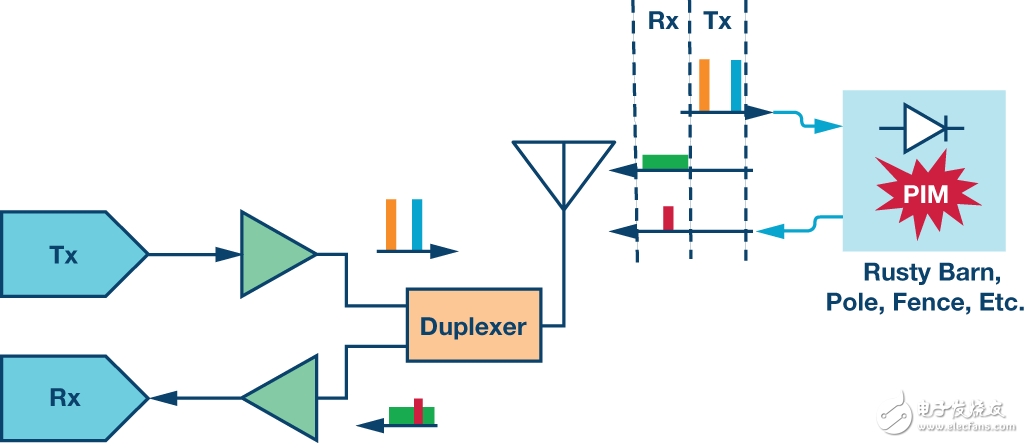 Figure 7. Outside the antenna or rust PIM
Figure 7. Outside the antenna or rust PIM In some cases, the PIM source can be detected by antenna positioning: while changing the antenna position, the PIM level is monitored. In addition, time delay estimates can also be utilized to locate the PIM source. If the PIM level is stable, standard algorithm cancellation techniques can be utilized to compensate for PIM. But more often, PIM contributions are affected by vibration, wind, and mechanical motion, making offsetting very difficult.
02 PIM Detection: Locating PIM Sources > > > >Line scan
A variety of line scanning techniques can be implemented. Line scanning measures the signal loss and reflection of the transmission system over the target frequency band. We can't assume that line scans always indicate the possible cause of PIM. Line scanning is more of a diagnostic tool that helps identify problems on the transmission line. Early assembly problems may manifest as PIM; if not addressed, these assembly issues may escalate, causing more severe transmission line failures. Line scanning is usually divided into two basic tests: return loss and insertion loss. Both have a large relationship with frequency and can vary greatly in a given frequency band. Return loss measures the power transfer efficiency of an antenna system. Be sure to minimize the power reflected back to the transmitter.
Any reflected power can distort the transmitted signal; if the reflected power is large enough, it can even damage the transmitter. A return loss value of 20 dB means that 1% of the transmitted signal is reflected back to the transmitter and 99% to the antenna - which is generally considered to be quite good performance. A return loss of 10 dB means that 10% of the signal is reflected, indicating poor performance. If the return loss measurement is 0 dB, 100% of the power is reflected, which is most likely caused by an open or short circuit.
> > > >Time domain reflection
Advanced TDR techniques can be utilized to provide a reference mapping of an optimal system and to determine the exact location at which loss begins to occur on the transmission path. With this technology, the operator can locate the PIM source for targeted and efficient repair. Transmission line mapping also alerts operators to some early signs of failure and prevents them from seriously affecting performance. The Time Domain Transmitting (TDR) method measures the reflection of a signal through a transmission line. The TDR instrument passes a pulse through the medium and then compares the reflection produced by the unknown transmission environment with the reflection produced by the standard impedance. Figure 8 shows a block diagram of a simplified TDR measurement setup.
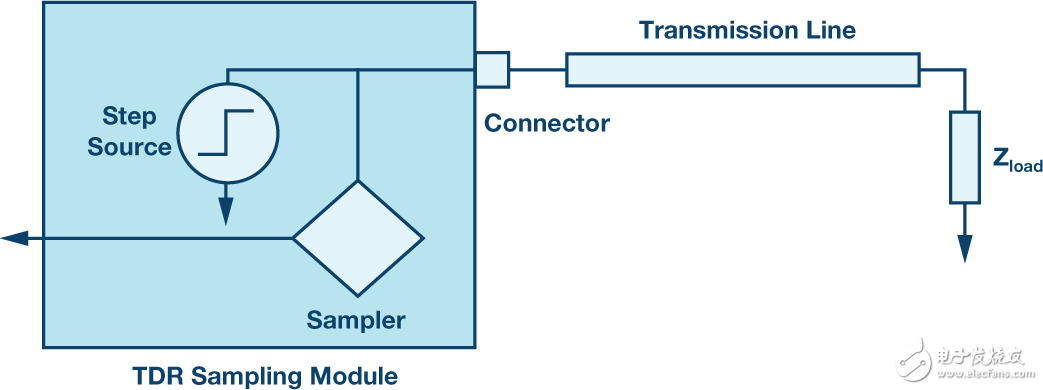 Figure 8. TDR setup block diagram
Figure 8. TDR setup block diagram Figure 9 shows an example of a TDR transmission line mapping.
 Figure 9. TDR transmission line mapping > > > >
Figure 9. TDR transmission line mapping > > > > Frequency domain reflection
Although both TDR and FDR work by sending an excitation signal along the transmission line and analyzing the reflection, the implementation of these two techniques is very different. FDR technology uses RF signal scanning instead of DC pulses used by TDR. In addition, FDR is much more sensitive than TDR and can locate system performance failures or reductions with higher accuracy. The principle of the frequency domain reflection method involves vector addition of the source signal and the reflected signal (from faults and other reflection characteristics in the transmission line). TDR uses a very short DC pulse as the excitation signal, which itself covers a very wide bandwidth, while the FDR scan RF signal actually operates at a specific target frequency (usually within the expected operating range of the system).
 Figure 10. FDR principle, relationship between scan frequency return loss and distance > > > >
Figure 10. FDR principle, relationship between scan frequency return loss and distance > > > > PIM positioning
It must be noted that although the line scan may indicate an impedance mismatch indicating the transmission line PIM source, the PIM and transmission line impedance mismatch may be mutually exclusive. PIM nonlinearities may occur where line scan results do not indicate any transmission line problems. Therefore, if a solution is to be provided to the user, not only to indicate the presence of the PIM, but also to accurately identify where the problem occurs on the transmission line, a more complicated implementation is required.
The mode of operation of the integrated PIM line test is similar to that described for the introduction of PIM cancellation for the design, except that the algorithm checks for the time delay estimation of the intermodulation products. It should be noted that the priority in these cases is not the cancellation of PIM artifacts, but rather where the intermodulation occurs on the transmission line. This concept is also known as "PIM Positioning" (DTP). For example, in a two-tone test,
Signal tone 1:
 |
Signal tone 2:
 |
W1 and w2 are frequencies; θ1 and θ2 are initial phases; t0 is the initial time.
IMD (eg low end) will be:
 |
Many existing solutions require the user to interrupt the transmission path and insert a PIM standard device (which can generate a fixed amount of PIM to calibrate the test equipment). The PIM standard device can be used to provide the user with a reference IMD that is at a specific location/distance of the transmission path and has a known phase. Figure 11 (a) shows the overview. The IMD phase θ32 (shown in Figure 11) is used as the reference position 0.
 Figure 11. PIM positioning
Figure 11. PIM positioning Once the initial calibration is completed, the system is reconfigured and the system PIM is measured, as shown in Figure 11(b). The phase difference between θ32 and θ'32 can be used to calculate the distance to the PIM.
 |
Where D is the distance to PIM and S is the wave propagation speed (depending on the transmission medium).
Assembly and rust PIM may be a slow incremental process; at the beginning of the installation, the base station can work efficiently, but after a period of time, such PIM phenomena may begin to become prominent. Environmental factors such as vibration or wind may affect the level of PIM, so the nature and characteristics of PIM are dynamic fluctuations. Covering or counteracting PIM can be difficult not only, but can be thought of as masking more serious problems that, if left unresolved, can cause overall system failure. In this case, the operator will want to avoid the costs associated with the overall downtime of the system, quickly locate and replace the PIM-enabled device.
PIM Positioning Technology (DTP) also provides a possibility for base station operators to track system performance degradation over time and identify potential problems in advance. With this information, you can replace weak points during planned repairs, avoiding costly system downtime and specialized repairs.
03 ConclusionPassive intermodulation is nothing new. This phenomenon has existed for many years and has been known for some time. In recent years, two different changes in the industry have brought it back to people's horizons:
1
Advanced algorithms now detect and locate PIM in an intelligent way and compensate as appropriate. Previous radio designers had to choose devices that would meet specific PIM performance requirements, but with the help of PIM cancellation algorithms, they now have greater freedom of choice. They can choose to achieve higher performance or achieve the same level of performance with lower cost and smaller devices. The cancellation algorithm assists the hardware components in a digital manner.
2
As the density and diversity of base station towers explode, we face new challenges from special system settings such as antenna sharing. Algorithm cancellation depends on knowledge of the primary transmitted signal. In the case of valuable space on the tower, different transmitters may share a single antenna, resulting in a much greater likelihood of a bad PIM effect. In this case, the algorithm may know information about certain parts of the transmitter path and can work effectively. The performance or implementation of the first generation of advanced PIM cancellation algorithms may be limited if certain portions of the transmit path are unknown.
As the challenges in the field of base station equipment continue to increase, PIM detection and cancellation algorithms are expected to bring considerable benefits and advantages to radio designers in the short term, but require development work to keep pace with future challenges.
Electronic Cigarette,Largest E-Cig Oem,China E-Cig Oem,Vape Pen Oem,Vape Device Oem
Shenzhen MASON VAP Technology Co., Ltd. , https://www.cbdvapefactory.com
